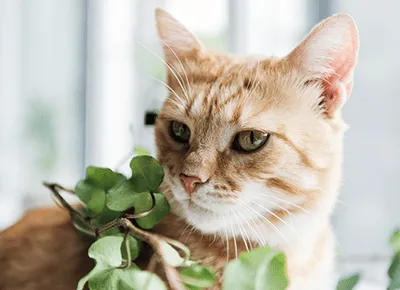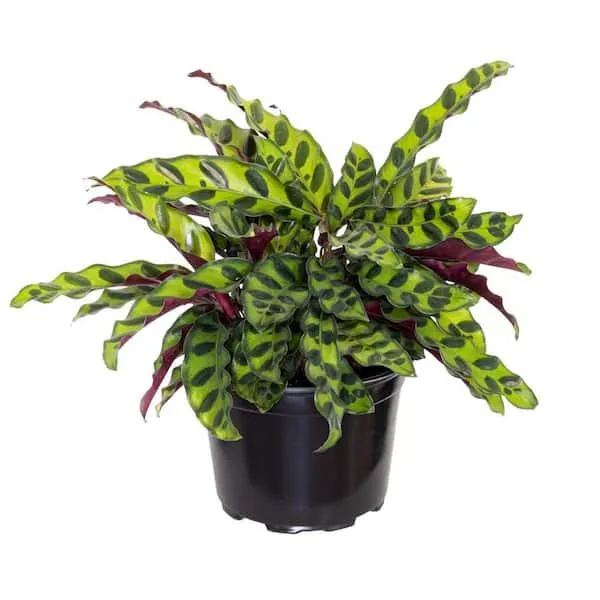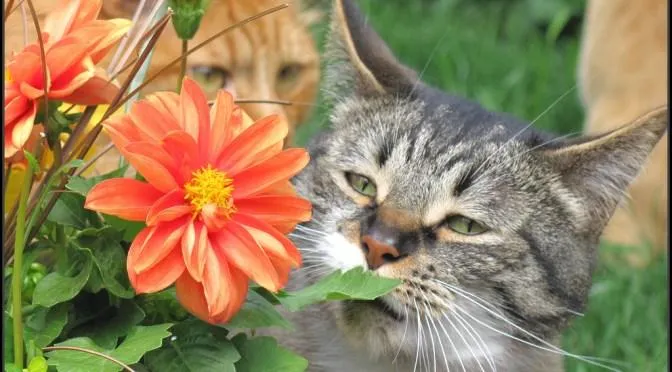Is Keeping Calathea Plants Safe Around Cats?
Every cat owner wants to keep their furry friend safe and healthy. That’s why knowing whether certain common houseplants are toxic or safe is so important. One plant many wonder about is the Calathea lancifolia, also called rattlesnake plant or prayer plant. Its beautiful patterns and movement can make it an attractive ornamental, but is it a risk to kitties? Let’s take a closer look.
Understanding Calathea Toxicity
- Calathea plants contain oxalate crystals in their leaves and stems.
- Oxalates can cause mouth and throat irritation if cats chew on or swallow significant amounts of plant material.
- The entire Calathea genus is listed as “potentially toxic” to cats by the ASPCA.
So in summary – while Calathea isn’t among the most toxic houseplants, the presence of oxalates means it’s best to keep them out of reaching for curious cats. From my experience as a vet tech, even non-life-threatening toxins can still lead to an unhappy pet if ingested. It’s always better to err on the side of caution when kids or pets are involved.
Signs of Calathea Toxicity in Cats
If a cat does nibble on a Calathea plant, keep an eye out for these potential symptoms:
- Mouth irritation or swelling
- Drooling or discomfort while eating
- Vomiting
- Diarrhea
Basically, anything indicating GI distress. However, many pets will only exhibit mild signs, if any, from a small exposure. The key is catching it early. If you notice unusual behavior, contact your vet right away, especially for kittens or sensitive cats. They can examine and decide if treatment is needed.

Keeping Calatheas and Cats Safe
So in summary, Calatheas do carry some risk to cats. But with the right precautions, you can still enjoy their natural beauty indoors together safely. Here are some tips:
- Place Calathea plants in high areas well out of reach, like atop tall bookshelves.
- Use hanging pots instead of ones on the floor.
- Cover soil with decorative rocks to discourage digging and ingestion.
- Train cats to avoid plant areas with positive reinforcement, Like treats for leaving plants alone.
- Supervise curious cats when playing near plant spaces.
- Consider a pot with holes too small for paws or noses if extra protection is needed.
As a cat owner, I’ve faced situations where my furballs got into things they shouldn’t. It’s stressful not knowing if they’ll be okay. But following a few basic precautions gives me peace of mind that we can all coexist safely. With some care, you can still indulge your green thumb and keep pets out of harm’s.
When to See the Vet
Of course, despite your best efforts, accidents may still happen occasionally. Here are signs it’s time for a vet checkup:
- Vomiting or diarrhea lasting over 6 hours
- Loss of appetite
- Lethargy or sluggish behavior
- Difficulty or strain while urinating
- Visible plant material still present in mouth or throat
It’s always better to err on the side of caution with potential toxins. The vet can examine them, maybe do bloodwork, and provide treatment if needed. Things like hydration support or activated charcoal may help in mild cases. Don’t try to wait it out – get help right away for peace of mind. Your vet’s office should also have the ASPCA Animal Poison Control hotline number handy for guidance 24/7 if needed.

Alternatives to Calatheas
If toxin risks still make you uneasy despite precautions, here are some similarly beautiful, low-toxicity tropical plants that may work better for cat households:
- Peace lilies (Spathiphyllum)
- Chinese evergreens (Aglaonema)
- ZZ plants (Zamioculcas zamiifolia)
- Pileas (Pilea peperomiodes)
- Philodendrons
Yeah, they’re not prayer plants. But they offer striking leaf textures and patterns with less potential issues. For a stunner on a budget, you really can’t beat a sturdy pothos vine. Basically, choose plants labeled safe, non-toxic, or only mildly so when cats may have access. It removes one stress from being a pet parent.
The Verdict on Calatheas and Cats
So in summary – while Calatheas aren’t among the most toxic plants for cats, their oxalate crystals do carry risks if significant amounts are ingested. The good news is with some smart placement, training, and supervision, you absolutely can keep both cats and Calatheas safely in your home. I’d say go for it if you follow guidelines and monitor closely at first. And as with anything, listen to your cat’s individual needs and tolerance levels. Ultimately, do what lets you feel safe and less stressed as a pet parent!
Calathea Lancifolia Toxicity for Cats
| Plant Part | Toxicity Level | Symptoms |
|---|---|---|
| All parts | Low | Vomiting, diarrhea, excessive drooling |
| Leaves | Low | Mild gastrointestinal upset |
| Stems | Low | Potential irritation to mouth and digestive tract |
| Flowers | Low | Similar symptoms as leaves and stems |
| Roots | Low | Potential gastrointestinal irritation |
FAQ
-
Is the calathea lancifolia plant toxic to cats?
The calathea lancifolia, also known as the rattlesnake plant or prayer plant, contains irritating oxalate crystals that can cause mouth irritation if eaten. While the plant itself is not usually fatal to cats, it could potentially make them feel quite sick.

-
What are the signs that a cat may have eaten part of a calathea?
If a cat ingests parts of the calathea plant, you may notice signs such as drooling, vomiting, loss of appetite, or swelling of the mouth or paws. Their tongue may appear red and irritated. Keep an eye on your cat and contact your vet right away if you see any concerning symptoms.
-
Is there anything I can do if my cat eats calathea?
If your cat does eat part of the calathea, you should induce vomiting right away – but only if less than an hour has passed since ingesting it. You can try giving hydrogen peroxide to make it vomit. Then take your cat to the vet for observation and treatment as they may need medication or fluids. Don’t try to make it vomit yourself more than once.
-
Are some calathea plants less toxic than others?
Most types of calathea contain similarly irritating crystals, so they should basically all be kept away from furry friends. That said, some varieties may have slightly higher or lower amounts, so it’s always best to err on the side of caution with any calathea species if you’ve got curious cats roaming around.
-
Is it ok to have a calathea if you don’t have any pets?
If you don’t have cats or other animals that may try to chew on houseplants, then calathea is fine to enjoy as a decorative indoor plant. Just be sure to keep it out of reach if visiting pets do come over. Their pretty patterns and movement can add a neat tropical flair to a sunny spot. Still, who knows what intrigues a curious calico?

-
What can I do to make my calathea less tempting to cats?
If keeping calathea despite feline housemates, put it high up out of paw’s reach, like atop sturdy shelving or hanging pots. You can also cover the soil with rocks to discourage any unwanted digging. Spraying the leaves with bitter apple every so often may help deter chewing and sniffing too. Watch your cats closely until you’re sure the plant is not a temptation. Communication is key with your cats!
-
Should I get rid of my calathea if I have an inquisitive cat?
It may be best to rehome calathea plants if you’ve got an adventurous kitty in the house that you’ve noticed paying temptingly close attention to your houseplants before. On the other hand, with some cat-proofing and keeping it located up high, your prayer plant can live harmoniously with felines. Ultimately, safety should be the priority when considering pets and toxic plants. What do you think, kitty – are houseplants worth the risk?!
